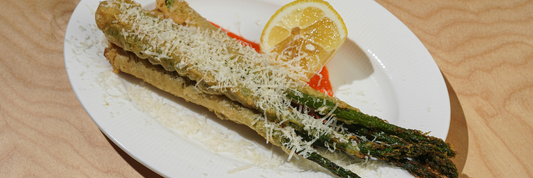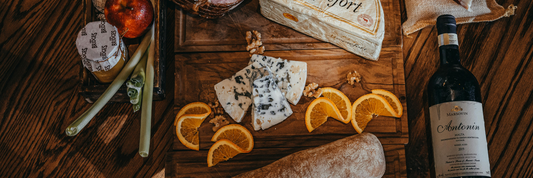If you run a coffee shop, tea business, or foodservice operation using bulk coffee cups, you have to know How to Store and Handle Paper Cups to Maintain Quality. These common challenges lead to operational losses and affect customer satisfaction.
At Kimecopak, we understand these issues and provide expert guidance for paper cup storage to help you maintain quality and ensure your takeaway service runs smoothly. This guide shares essential paper cup storage tips tailored especially for business owners and managers handling bulk paper cup inventory.
- How to Choose the Right Cups for Your Business: A Strategic Guide
- Expiry Date of Paper Cups: Do They Really Expire?
- Can Paper Cups Go in Microwave? Safety Tips & Guidelines
Why Proper Storage of Paper Cups Matters
Proper storage of paper cups is essential to prevent deformation, contamination, and loss of product usability during large-scale storage. The disposable paper cup industry, which serves the HoReCa sector, fast food, and delivery services, faces challenges such as improper stacking, moisture exposure, temperature fluctuations, and poor hygiene that compromise cup quality. These factors affect the structural integrity, leading to leaks and reduced customer satisfaction.

Storing paper cups at the right temperature (between 14°C and 24°C) and humidity (45%-60%) preserves the durability of seams and barrier coatings. Exposure to excessive moisture or heat can cause warping, mold, and weakened adhesive bonds, significantly lowering leak resistance and usability. For example, stacks compressed too heavily may deform cups, with some reports showing up to 15%-20% of bulk cups wasted due to poor handling and storage damage.
Maintaining proper storage conditions helps protect hygiene, extends shelf life (typically 1-2 years), and ensures every cup performs reliably as intended. This reduces waste, minimizes operational losses, and supports a consistent customer experience.
Why Do Coffee Shops Use Paper Cups? 7 Reasons Behind This Industry Standard
Practical Tips for Storing Paper Cups Correctly
Proper storage of paper cups is crucial to maintain their quality, structural integrity, and hygiene, especially in bulk quantities used by tea shops, cafes, and foodservice businesses. Poor storage can lead to cup deformation, compromised leak resistance, mold growth, and unpleasant customer experiences. Below are in-depth best practices for storing paper cups effectively:
Maintain Optimal Temperature and Humidity
Paper cups rely on delicate barrier coatings and adhesive seams to maintain their usability and leak resistance. Temperature and humidity directly impact these features:
- Temperature: The ideal storage range is between +5°C and +25°C (41°F to 77°F). Temperatures outside this range can lead to warping, melting of coatings, or drying out of paper fibers. Low temperatures below 5°C increase brittleness, while high temperatures above 25°C may soften adhesive bonds or damage coatings.
- Humidity: Target around 55% relative humidity with a tight tolerance of ±5%. Excessive humidity promotes mold growth, weakens seams, and can cause delamination where layers of the cup separate. Conversely, very low humidity causes cups to dry out, making them brittle and prone to cracking during transport or use. Optimal humidity ensures the paper fibers retain flexibility and the cup retains shape.
Maintaining consistent temperature and humidity conditions prevents premature aging and structural compromises in stored paper cups.

Correct Stacking and Handling to Avoid Deformation
How paper cups are stacked and handled during storage critically affects their shape and usability:
- Stack Height: Avoid stacking cups too high. Tall, heavy stacks compress the lower cups, deforming rims and sides, which leads to poor sealing of lids and leaks. Moderate stack height optimizes space while protecting cup structure.
- Packaging Support: Always keep cups in their original packaging polyethylene sleeves or sturdy cardboard boxes to provide structural support and shield against dust, dirt, and moisture. This also aids hygienic handling.
- Airflow: Do not place stacks directly on cold or damp floors or against walls. These surfaces can transfer moisture and cold, causing condensation and weakening of the cups. Place cups on pallets or shelving with space around them to allow air circulation and maintain dry conditions.
Protect from Sunlight, Heat, and Abrupt Temperature Changes
- UV Protection: Even indirect sunlight can degrade cups by fading printed branding and weakening barrier coatings. Store cups in shaded or enclosed environments to avoid UV exposure.
- Heat Sources: Keep cups away from heaters, ovens, and espresso machines. Heat can cause cups to warp, adhesives to fail, and condensation to build up, which fosters mold growth.
- Temperature Fluctuations: Rapid changes in temperature cause expansion and contraction of materials, leading to micro-fractures and delamination. Maintaining stable conditions avoids this damage.
Acclimatization Process Before Use
When paper cups are shipped or stored in different climates, they should undergo acclimatization before use:
- Keep cups sealed in their original packaging and place them in a controlled environment at +15°C to +25°C with less than 60% humidity for 2–4 days.
- This process equalizes moisture content, prevents condensation when moved to warmer or more humid areas, and reduces risks of warping, delamination, or mold formation.
- Acclimatized cups ensure the best performance during filling, sealing, and use by end-customers.
Warehouse Hygiene and Ventilation
- Store cups in clean, pest-free environments. Contamination from insects or rodents poses health risks and damages packaging quality.
- Ensure good ventilation to prevent moisture build-up, especially in humid climates. Poor ventilation almost guarantees mold and mildew issues over time, compromising cup integrity and safety.
Regional Climate Considerations for Storage
- Different climates require tailored humidity and temperature control strategies:
- In humid regions, use dehumidifiers and maintain air conditioning to keep relative humidity within the recommended range.
- In dry, arid zones, humidifiers may be needed to prevent paper drying and brittleness.
- Example: UK warehouses in coastal areas with high moisture require continuous monitoring and ventilation adjustments to maintain optimal storage environments for bulk cups.
Handling Paper Cups During Storage and Use
Proper handling of paper cups at every stage from delivery to shelving, restocking, and use is crucial to ensure the cups retain their structural integrity, hygienic safety, and presentation quality. Handling errors can lead to contamination, deformation, and premature wastage, which negatively impacts operational efficiency, product usability, and customer experience. Below is an in-depth explanation of best practices:

Clean Handling Procedures: Maintaining Hygiene and Safety
- Hand Hygiene: Always handle paper cups with clean, dry hands or, preferably, with disposable gloves. Staff should wash or sanitize hands before handling cup inventory to minimize contamination risks. This is particularly vital in food preparation and healthcare environments that mandate strict hygiene protocols.
- Avoid Direct Contact with Drink Surfaces: Minimize touching the inside rim and base of cups and lids, as these contact points directly impact consumer health and beverage safety. Encourage staff to hold cups gently by the outside surfaces only.
- Use Designated Tools or Dispensers: Where possible, use cup dispensers or stacking trays to reduce direct hand contact and limit mishandling during retrieval and restocking. This also speeds up operations and standardizes handling procedures.
Avoid Crushing or Damaging Paper Cups: Protecting Structural Integrity
- Gentle Movement: Paper cups, though designed for durability, are sensitive to compression and impacts. Rough handling during transportation or restocking (such as dropping stacks or shifting heavy pallets) can cause cups to deform, especially at rims and bases, leading to sealing issues with lids.
- Retain Original Packaging: Keep cups in manufacturer boxes or polyethylene sleeves until needed. These provide essential support and protection from environmental damage and contact.
- Safe Stacking Practices: Avoid high stacking beyond recommended heights to prevent crushing bottom layers. Moderation in stack height preserves circular shape and prevents creases or warping. Incorrect stacking introduces leaks and wastes product.
- Use Protective Equipment: Use carts with cushioning or trays when moving large quantities to reduce stress and vibration damage. Avoid pushing cups across rough surfaces or exposing them to sharp impacts.
Regular Inventory Checks: Managing Product Quality and Waste Reduction
- Label Monitoring: Regularly inspect batch codes, printing dates, and any product expiry or best-before dates. Awareness of shelf life prevents use of compromised cups that may have degraded coatings or weakened adhesives over time.
- Implement FIFO Systems: Rotate inventory using First In, First Out practices to use older stock before newer deliveries. This approach avoids stockpiling and limits potential loss from aging or exposure.
- Visual Inspection: Frequently check for cups that show signs of moisture damage, mold, discoloration, warping, or crushed rims. Remove defective stock immediately to maintain product quality and customer trust.
- Inventory Management Software: Consider digital inventory tools that track cup shelf life, quantities, and batch progression. Automated alerts help reduce human error and support smooth inventory turnover.
Supporting Operational Excellence Through Training and Documentation
- Staff Training: Train all personnel on paper cup handling protocols, including hygiene, gentle handling, stacking limits, and inventory checks. Clear SOPs (Standard Operating Procedures) reduce inconsistency and protect product quality.
- Written Handling Guidelines: Display handling and storage guidelines in storage areas for quick reference, reinforcing proper methods and raising awareness about the importance of care in handling.
Frequently Asked Questions (FAQs)

What is the best way to store bulk coffee cups to prevent damage?
Store bulk coffee cups in their original packaging (polyethylene sleeves or sturdy boxes) on shelving or pallets off the ground. Avoid stacking cups too high to prevent crushing or deformation. Ensure there is adequate airflow around stacks by not placing them directly against walls or floors. Keep the storage area clean, dry, and free from pests for hygiene and quality preservation.
How should temperature and humidity be controlled when storing paper cups?
Maintain storage temperature between +5°C and +25°C (+41°F to +77°F) to protect the cup’s barrier coating and adhesive seams. Relative humidity should ideally be around 55%, with a tolerance of ±5%. Excessive humidity above 60% can cause mold and weaken cup integrity, while low humidity below 40% may dry out and make cups brittle. Stable and moderate environmental conditions prevent warping, delamination, and other damage.
Why is acclimatization important for paper cups before use?
Acclimatization involves allowing cups to rest in their sealed packaging for 2–4 days at room temperature (+15°C to +25°C) with moderate humidity (<60%) before use. This process allows paper fibers and adhesives to adjust to local climate conditions, preventing condensation, warping, delamination, and mold formation. Proper acclimatization ensures cups maintain their shape and performance during filling and use.
How long can paper cups be stored without losing quality?
Under ideal storage conditions controlled temperature (5–25°C), moderate humidity (45–60%), and protection from sunlight and contaminants paper cups typically retain quality for 1 to 2 years. However, stacking mistakes, moisture, temperature fluctuations, and poor hygiene can significantly reduce shelf life. Always check batch codes and expiry dates to rotate stock properly and discard compromised inventory.
Conclusion
Proper storage and handling of paper cups under controlled temperature and humidity conditions are critical for maintaining their quality, structural integrity, and hygiene. Implementing best practices like careful stacking, avoiding direct sunlight, and allowing acclimatization helps reduce deformation, contamination, and waste. These measures not only protect your investment but also ensure a consistent, reliable experience for your customers.
By adopting these storage tips, businesses can significantly minimize spoilage and operational losses, contributing to sustainability and efficiency. Keeping paper cups in optimal condition ultimately supports smoother takeaway service and stronger brand reputation.
To ensure the best quality packaging tailored to your needs, explore Kimecopak’s premium paper cups, eco-friendly, durable, and designed to meet the demands of fast-paced takeaway and foodservice operations. Partner with Kimecopak for trusted solutions that protect your product and enhance customer satisfaction.
Contact Kimecopak now to explore their product range or request a personalized quote.
-
LEARN MORE about How "Subscribe for a Happy Life" will benefits your business HERE!
-
LEARN MORE about Kim Vu, sharing on the challenges she faced as a former restaurant owner, and how she overcame them to create KimEcopak HERE!




